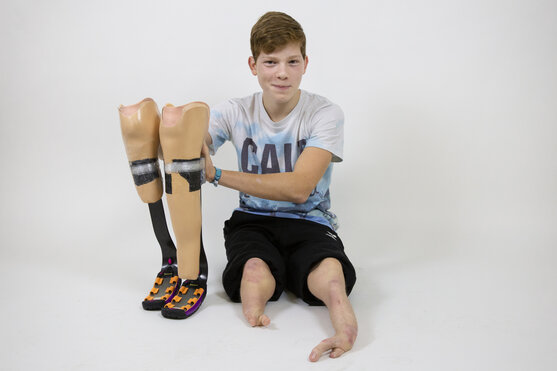Combination of several defects
What is FFU syndrome?
Femoral-fibula-ulna syndrome (FFU syndrome) is a very rare congenital disease, usually comprised of an asymmetric combination of several defects. These defects usually affect the thigh bone (femur) and the calf bone (fibula) of one side of the body, as well as the ulna or the elbow joint (elbow aplasia) on the opposite side.
FFU syndrome is sometimes also associated with PFFD.

This device compensates for the leg length deficit and provides corrective support.
We prepare you for the daily use of your orthoprosthesis
Make an appointment over the phone or send us a message!
We can help you!
Sample treatment

Femoral-fibula-ulna syndrome.

Caring for children and adolescents with FFU syndrome is part of our daily work. There is hardly any patient that we can't get back up and running.
The Orthopedic Children’s Clinic in Aschau is one of the largest specialist clinics for pediatric orthopedics in Central Europe.
When it comes to orthopedic treatment for infants and children, it is extremely important for all parties to pull together: parents, doctors, technicians and therapists.
Physiotherapists support the individual care of our little patients at our headquarters and all of our branches.

